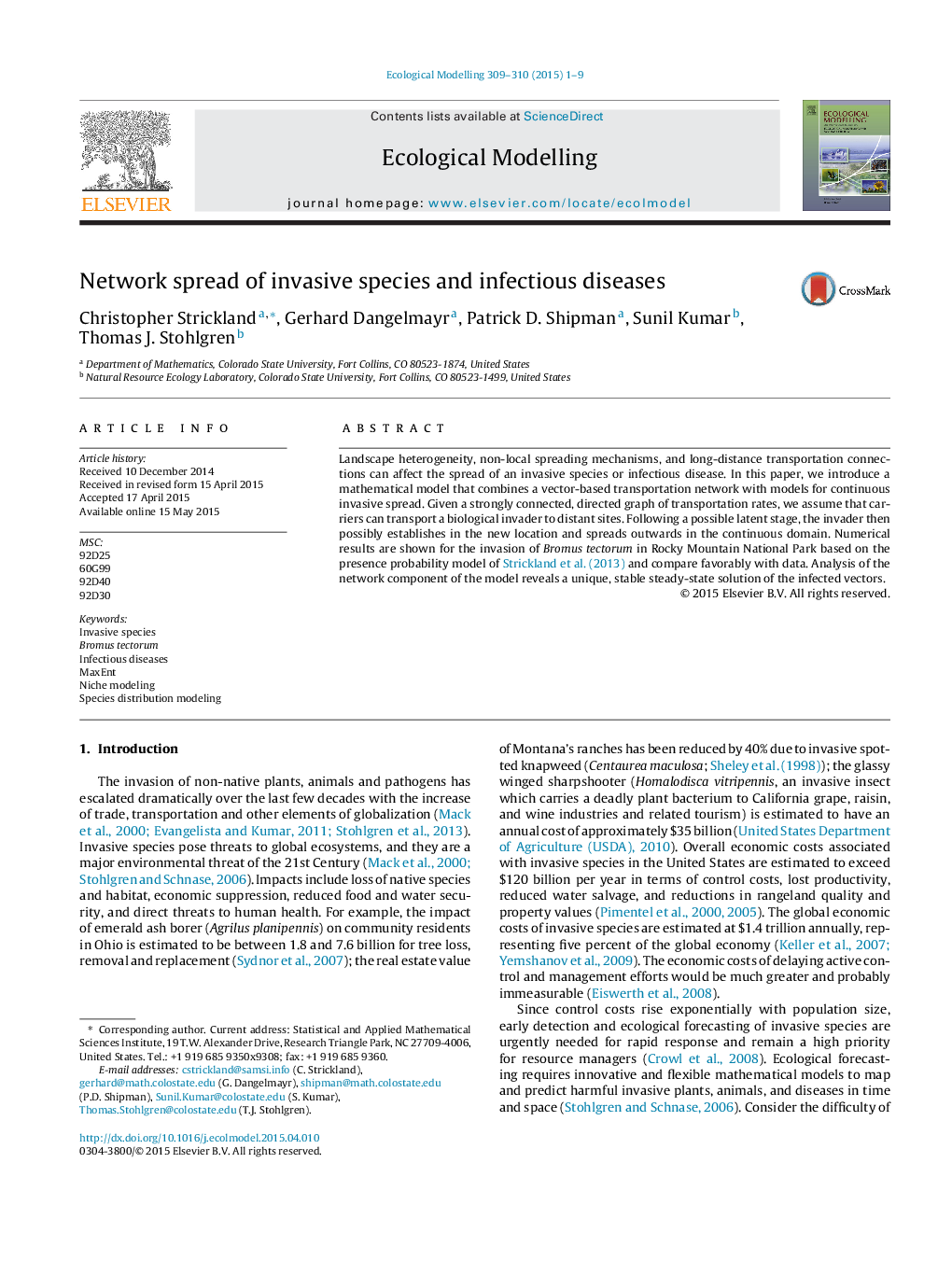| Article ID | Journal | Published Year | Pages | File Type |
|---|---|---|---|---|
| 4375670 | Ecological Modelling | 2015 | 9 Pages |
•We introduce a mathematical model for invasive species spread via a network.•Spread on the network is by the action of disease vectors in an SEIS manner.•Network spread is coupled to a spatial continuous model of invasive spread.•Numerical results for a B. tectorum invasion compare favorably with data.•Analysis of the model reveals a unique, stable steady-state solution for vectors.
Landscape heterogeneity, non-local spreading mechanisms, and long-distance transportation connections can affect the spread of an invasive species or infectious disease. In this paper, we introduce a mathematical model that combines a vector-based transportation network with models for continuous invasive spread. Given a strongly connected, directed graph of transportation rates, we assume that carriers can transport a biological invader to distant sites. Following a possible latent stage, the invader then possibly establishes in the new location and spreads outwards in the continuous domain. Numerical results are shown for the invasion of Bromus tectorum in Rocky Mountain National Park based on the presence probability model of Strickland et al. (2013) and compare favorably with data. Analysis of the network component of the model reveals a unique, stable steady-state solution of the infected vectors.
